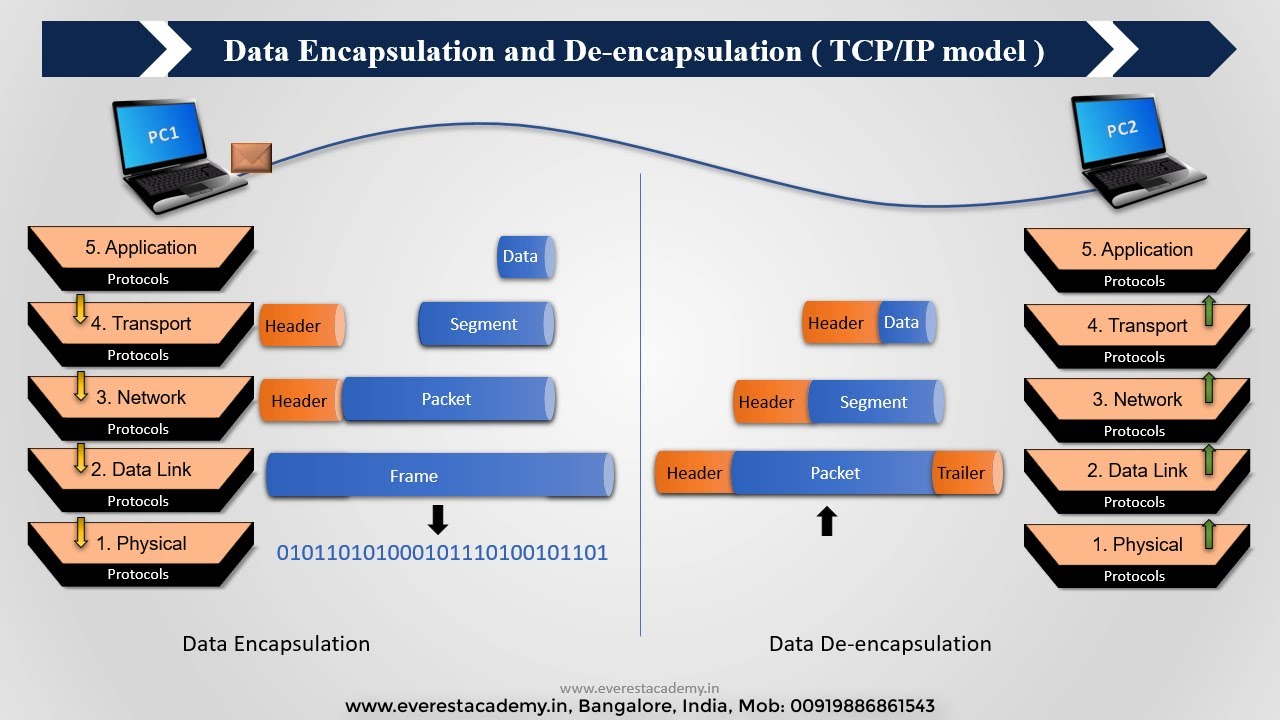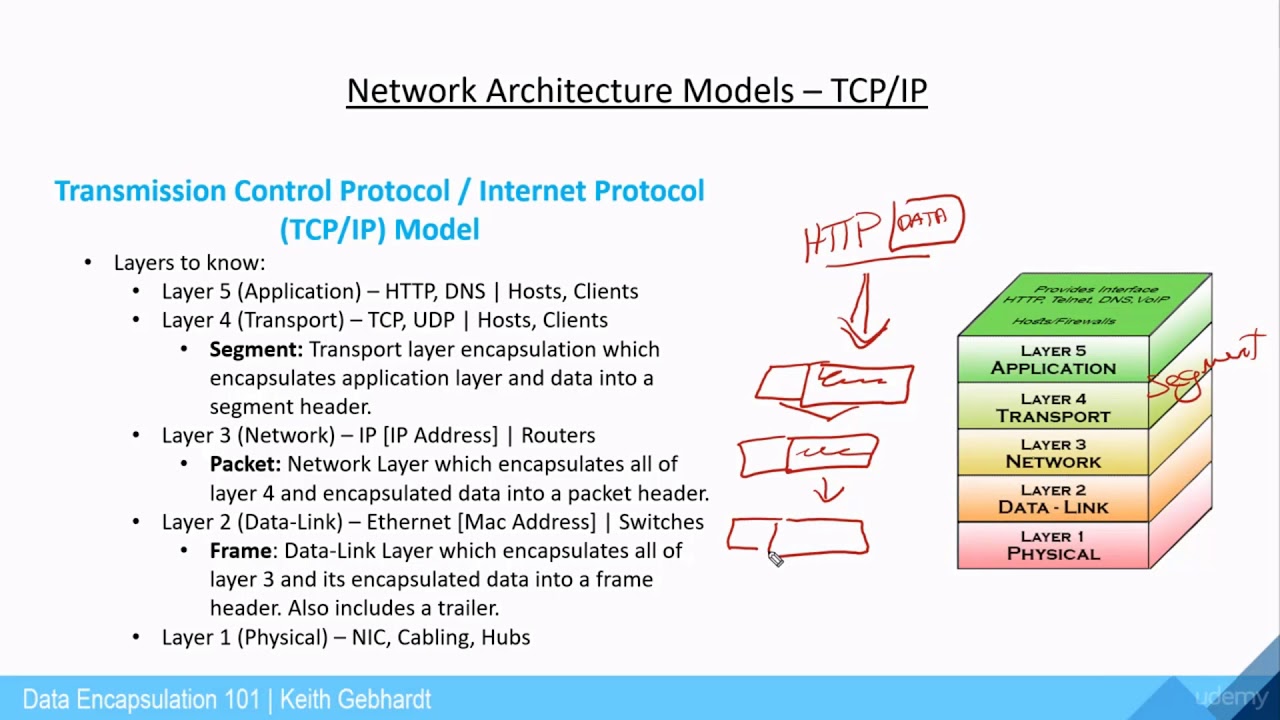TCP/IP encapsulation is fundamental to how data travels across the internet. Let's break down this process step by step.
What is Encapsulation?
Encapsulation is like preparing a letter for delivery. You put the message (data) in an envelope, add the address, and then hand it to the postal service.
In networking, each layer adds its own header and sometimes a trailer to the data. This is encapsulation.
Think of it like nesting dolls. Each doll is placed inside a slightly larger one. Each layer adds its own information.
The TCP/IP Model Layers
The TCP/IP model has four main layers:
- Application Layer
- Transport Layer
- Internet Layer
- Network Access Layer
Application Layer
This is where your applications interact with the network. Examples include your web browser, email client, or file transfer programs.
The application layer creates the data. Imagine you're sending an email. The content you write is the data.
Transport Layer
This layer is responsible for reliable data transfer. TCP (Transmission Control Protocol) and UDP (User Datagram Protocol) operate here.
TCP ensures data arrives in the correct order and without errors. It's like a registered letter. UDP is faster but less reliable.
The transport layer adds a header containing port numbers. These ports identify the specific application or service using the network. For example, web traffic typically uses port 80 (HTTP) or 443 (HTTPS).
Let's say your email application uses TCP. The transport layer adds a TCP header with source and destination port numbers.
Internet Layer
The internet layer handles the routing of data packets across networks. IP (Internet Protocol) is the primary protocol at this layer.
IP adds a header containing source and destination IP addresses. This is like the street address on your envelope.
The internet layer receives the data from the transport layer (including the TCP header). It then adds an IP header. The entire package is now called an IP packet.
Network Access Layer
This is the lowest layer. It handles the physical transmission of data over the network medium (e.g., Ethernet, Wi-Fi). Also known as the Data Link Layer.
Ethernet adds a header and trailer to the IP packet. The header contains the source and destination MAC addresses. The trailer contains a checksum for error detection.
The network access layer receives the IP packet. It then adds an Ethernet header and trailer. The entire package is now called an Ethernet frame.
The Encapsulation Process in Action
Let's put it all together. Imagine you're browsing a website.
- Your browser (application layer) requests a webpage.
- TCP (transport layer) adds a header with port numbers (e.g., source port and destination port 443 for HTTPS). This creates a TCP segment.
- IP (internet layer) adds a header with source and destination IP addresses. This creates an IP packet.
- Ethernet (network access layer) adds a header and trailer with MAC addresses and a checksum. This creates an Ethernet frame.
The Ethernet frame is then transmitted over the network.
Decapsulation
When the data arrives at the destination, the process is reversed. This is called decapsulation.
- The network access layer removes the Ethernet header and trailer.
- The internet layer removes the IP header.
- The transport layer removes the TCP header.
- The application receives the original data.
Accurate Statement
So, which statement accurately describes TCP/IP encapsulation?
The correct statement is: "Each layer adds a header (and sometimes a trailer) containing control information to the data as it moves down the TCP/IP model."
This accurately reflects the step-by-step addition of headers at each layer of the TCP/IP model.
Understanding TCP/IP encapsulation is crucial for anyone working with networks. It explains how data is prepared for transmission across the internet.


